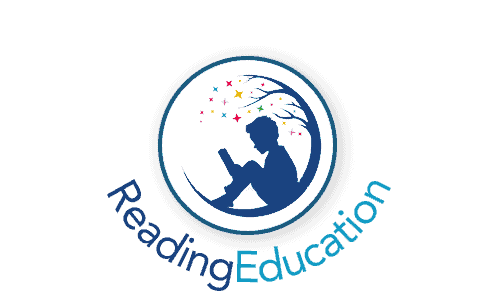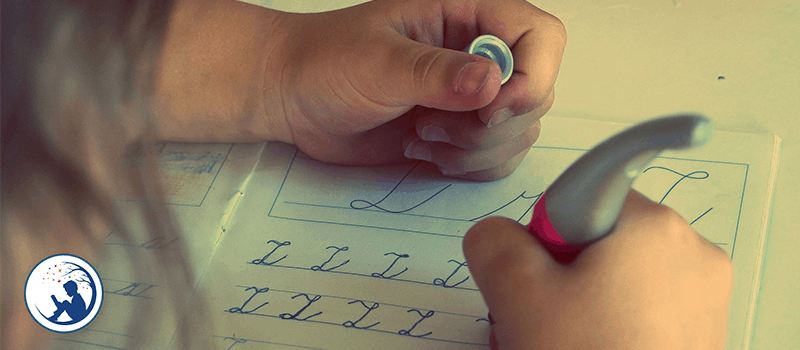Over the last several years, vocabulary development has all of a sudden, become the ‘hot topic’ in education and learning. Although this may seem a little perplexing given that development of a child’s vocabulary is, and always has been, an essential aspect of learning to read and write, in reality, it shouldn’t come as too much of a surprise given that children are learning (and being expected to learn) at ever-increasing rates. Parents and teachers alike are pushing the boundaries of learning so that children develop at the fasts rate possible. After all, there is a long recognised correlation between language development and a child’s academic success.
It is teachers in particular that are finely attuned to the utmost importance of assisting children in developing the ability to understand write and spoken language, which, in turn, enables a grasp of the English language that allows them to express their emotions, feelings and ideas with clarity and confidence.
As mentioned above, one critical aspect of language development in children is the broadening of vocabulary, i.e. the range of words they’re both able to understand and to communicate.
Unsurprisingly, research indicates a strong association between vocabulary and comprehension, where an expansive vocabulary, i.e. knowing many words, and a deep vocabulary, i.e. know many words well, results in better understanding.
Where writing is concerned, a more extensive vocabulary gives a child a much more comprehensive range of ways to express their thoughts and ideas, enabling them to communicate with style and precision.
The vast majority of vocabulary growth and language development in children emanates from organic courses, as opposed to direct teaching – for example, conversations with classmates, friends, and family members, and books that they read and have read to them. However, this doesn’t mean that you, as a parent or tutor, cannot help your child to learn new words in a more direct fashion. To show you how here are seven strategies you can use to improve your primary school-aged child’s vocabulary.
How To Expand The Vocabulary of Your Primary School-Aged Child: Seven Steps To Success
#1 – Display Captivating Words
A fantastic first step to help your child expand their vocabulary is to help them become aware of interesting or unfamiliar words they come across. This can be anywhere – in the classroom, at home, while watching tv or reading a book, or even during a conversation with someone who has a more advanced grasp of the English language. Whenever your child hears a word, they don’t know or perhaps intrigues them, encourage them to discuss it with you or even write it down if they know how to spell it. Write these words in fridge magnets, on a blackboard/whiteboard, or even on pieces of paper around your home. This will help to expose your child to the words repeatedly, which will solidify their understanding of said words, thus broadening their vocabulary.
#2 – Word Webs
Creating ‘word webs’ will help your child to think carefully about new words, their meanings, and how they are linked to words they’re already familiar with. To create a ‘word’ web, write the word in question in the centre of the page and draw a circle around it. To create a ‘web’, draw five other circles on the page, labelled: ‘Synonyms’, ‘Antonyms’, ‘Definition’, ‘In a Sentence’, and ‘Common Phrases’, and connect these circles to centre circle that contains the word, using lines. In each of these circles, write extra information about the words (according to the title of the circle). This will help your child to not only remember the word, but also how it used, what it means, words that are similar, and words that are opposite.
#3 – Exploration of Morphology
The smallest components of grammar that communicate meaning are called ‘morphemes’. They include prefixes (e.g. ‘un’). , roots (e.g. ‘happi’), and suffixes (e.g. ‘ness’). By combining these individual components, it is possible to create words that have distinct meanings, e.g. unhappiness. By learning some of the most frequent and commonly used morphemes, it’s possible for a child to unlock meanings of many other different words.
#4 – Word Collecting
Learning the meaning of words is actually more difficult than you’d first imagine because the process is largely dependent on context. Let’s take the word ‘dog’, for example; it is a word used to describe a pet, but it is also used to follow someone closely and persistently. Language used in books and other reading material is typically very different from that used during conversations; therefore, the majority of the rich language a child learns comes from reading rather than explicit teaching of vocabulary.
#5 – Careful Word Selection
In order to expand your child’s vocabulary, it is necessary to introduce them to a wide array of words; however, the process must begin by carefully choosing a small(fish) number of ‘key words’ to get the ball rolling. Choosing words that are linked to a specific topic or because they are particularly useful is likely to have a more significant impact compared to choosing words completely at random. Relevancy and usefulness are far better than randomness in the initial stages of expansion of your child’s vocabulary.
#6 – Idioms
Although knowing what words means furnishes your child with the understanding of what a particular word means, it does not always mean they’ll understand phrases or sentences in which said word(s) is used. Using idioms is a great learning tool for this purpose. The meaning of an idiom is well known, but isn’t typically indicated by the individual words. For example, the phrase “sitting on the fence”. Your child might know what the words “sitting”, and “fence” mean, but knowing these meaning won’t help them understand the meaning of the phrase.
#7 – Exploration of ‘Different’ Vocabularies
In some instances, discussion concerned with the teaching of vocabulary begins with a ‘word gap’ being mentioned, i.e. where, for a wide array of reasons, some children do not have the words or grasp of the English language to the same extent as their peers. While this might be true of language that is school-specific, all children will typically have a well-developed vocabulary in some areas – often more expansive their peers and perhaps even adults around them. This is particularly true of words that are associated with a specific interest, such as football, soccer, ballet, skateboarding, dinosaurs etc. Providing your child with the opportunity to celebrate and showcase their existing grasp of the English language is a fantastic starting point for instigating a discussion about how we learn words and the reason for wanting to.
Improving Vocabulary in Primary School-Aged Children: A Summary
Vocabulary is a single strand in the many-stringed bow known as language development. Control and grasp of language not only depends on words but the understanding of how to use words. If you want your child to become as adept a communicator as possible, it will take a lot more than merely learning new words. However, expanding their vocabulary is certainly a snot-too-shabby place to begin.

